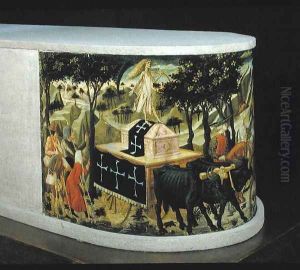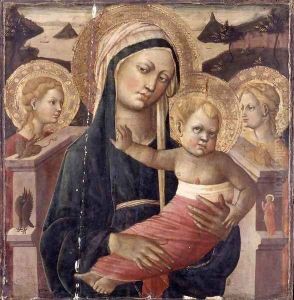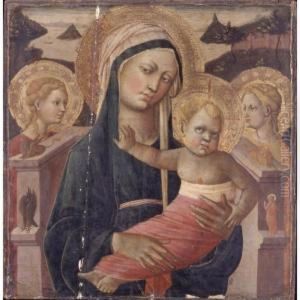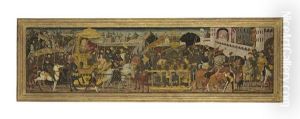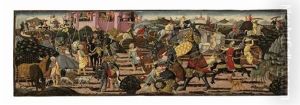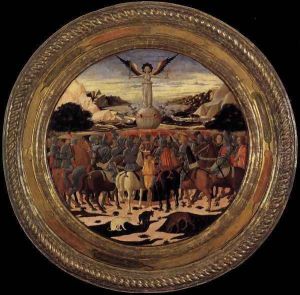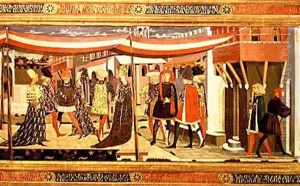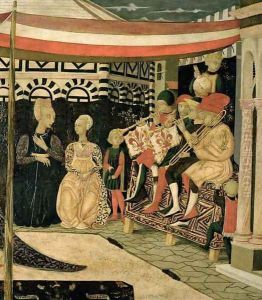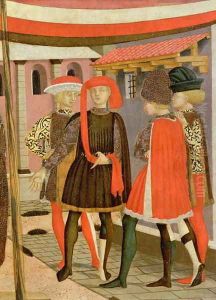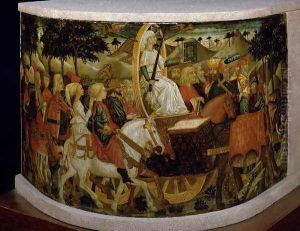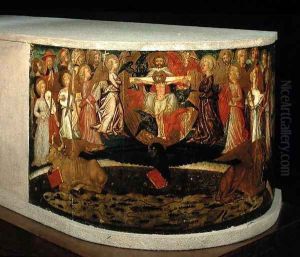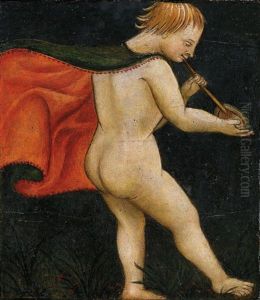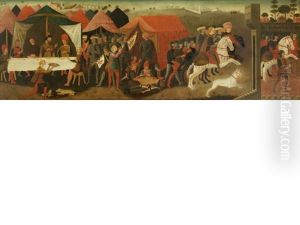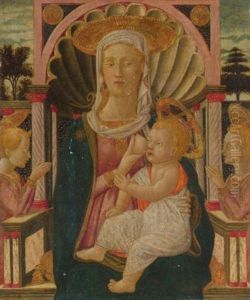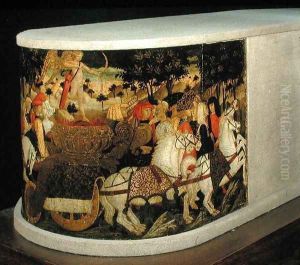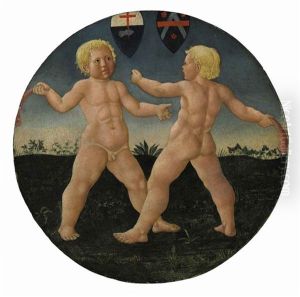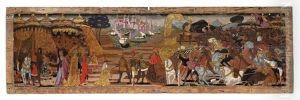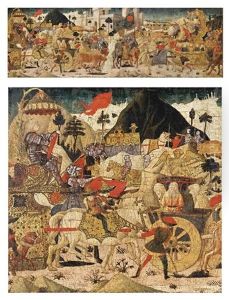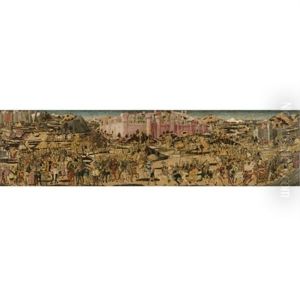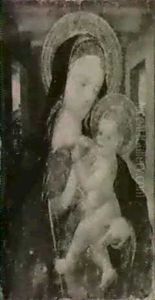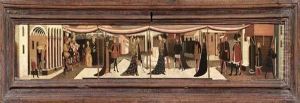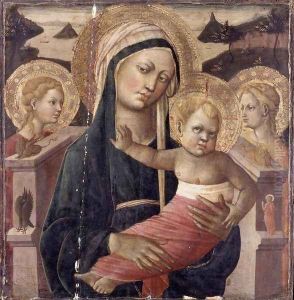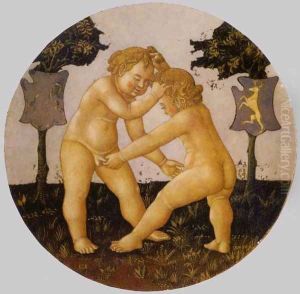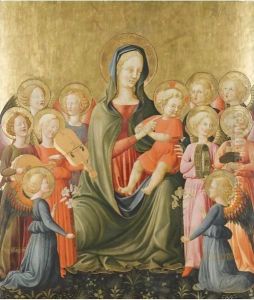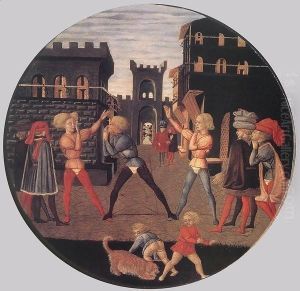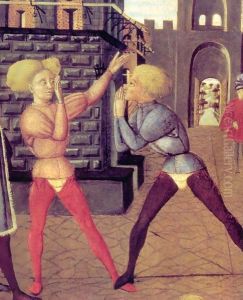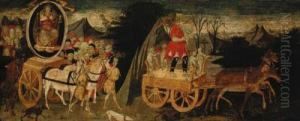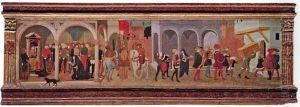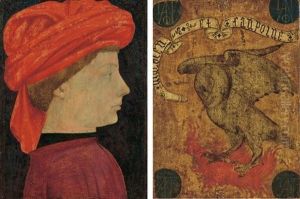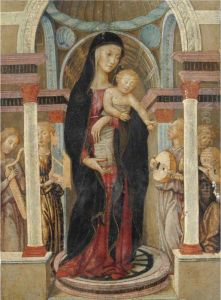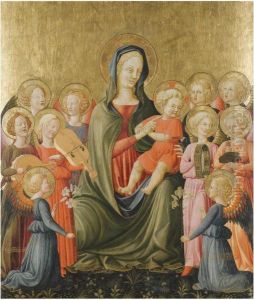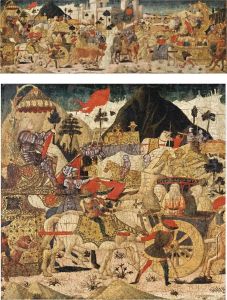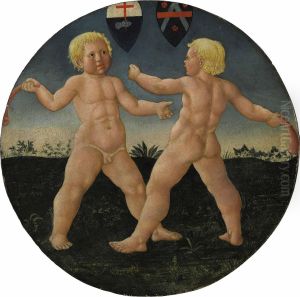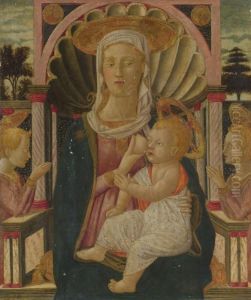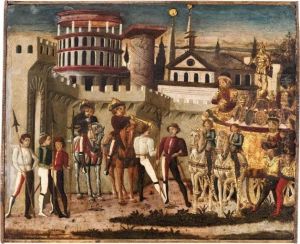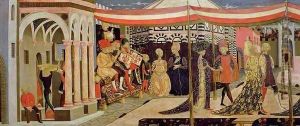Giovanni di ser Giovanni Guidi (see Scheggia) Paintings
Giovanni di ser Giovanni Guidi, better known as Lo Scheggia, or 'The Splinter,' was an Italian painter of the Early Renaissance. He was born in 1406 in San Giovanni Valdarno, Tuscany, and was the younger brother of the famous Renaissance painter Masaccio. Despite his brother's shadow, Lo Scheggia managed to carve out his own career and establish a reputation as a skilled artist in his own right.
Lo Scheggia's style was influenced by both his brother and his training in Florence, a center for art and culture at the time. His work is characterized by its lively narrative quality and detailed figures, often set against a background of everyday life in the 15th century. He was particularly known for his cassoni panels, which are painted wooden chests that were popular in Italian households for storage and as dowry items. These panels often depicted historical or mythological scenes and showcased Lo Scheggia's talent for storytelling through art.
Although not as groundbreaking as his brother Masaccio, Lo Scheggia was appreciated for his decorative style and attention to detail. His works were in demand, and he was commissioned by various patrons, including the famous Medici family of Florence. One of his notable works is the 'Madonna della Cintola,' which depicts the Virgin Mary and saints. This painting highlights his ability to combine religious themes with a sense of warmth and humanity.
Lo Scheggia also painted secular subjects, and his playful 'The Triumph of Fame' is an example of his work outside of religious commissions. His art did not just adorn private collections; it also graced public spaces, such as the Palazzo Pubblico in Siena, where some of his frescoes can be found.
He lived and worked primarily in Florence and Siena, contributing to the artistic movements of the time. Lo Scheggia passed away in 1486, leaving behind a body of work that continues to be appreciated for its charm and historical value. Although he may not be as well-known as other Renaissance masters, Lo Scheggia's contributions to the art of the period provide a window into the cultural and social dynamics of Italian life in the 15th century.
